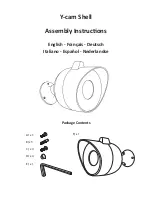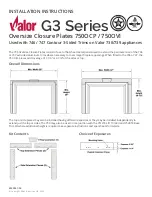
ARBOTOM
®
- Manual
50
ARBORADIX™
Please note: The ARBORADIX™-mode is only available if this module is
unlocked. An instruction how to unlock the module can be found
on page 39 in this handbook.
Concept
ARBORADIX™ was developed for the detection of roots and estimation of the area
covered by roots- especially in case of a possible infection with fungi.
Mechanical impulses are being induced into the ground by hitting on a metal pole.
Runtimes of these impulses to the tree are measured.
If no impulse reaches the tree, it can be assumed that there were no roots
underneath the area where the impulse was inserted into the ground.
To create an image of the roots system the positions of where the impulses were
inserted into the ground are entered into the software.
The measurement is usually done in 1m, 2m, and 5m distance from the tree.
For this relatively method which we are applying since 2004 no standard
value is available yet. Due to this circumstance every case has to be
analysed and evaluated individually.
From our experience from all the trees we have inspected with this method so far it is
to be assumed, that if a root is highly damaged, rotten or capped the induced impulse
does not reach the sensors on the tree at all or very slowly compared to other roots of
this tree.
In general if is to be assumed that a tree is still standing and has faced strong winds
lately at least one root is still intact. Therefore at least one fast runtime should be
measured, which then can be used to compare the runtime with each other. However
it is not possible to make absolute statement concerning the stability of the tree.
Measuring principle:
Through hammer strokes on the root sensor pole a compression wave which spreads
conical in the ground is being generated.
If there is a root which is thick enough located underneath pole the generated wave
can carry forward in the wood of the this root and can reach the sensors located on
the stem base on the tree.
In general the ARBORADX™-measurement is done after a stem base tomography with
sensors located on the root collar.








































